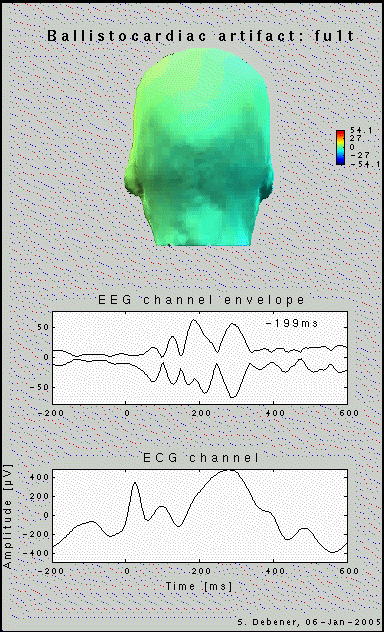EEG/fMRI

What is it good for?
The two major tools for the non-invasive investigation of human brain function are EEG and fMRI.
Unfortunately, they both come with major drawbacks. Whereas the neuronal sources of the scalp-recorded
EEG signals cannot be exactly localized in the brain, EEG provides rich temporal information about brain activity (in
millisecond precision).
The opposite is true for fMRI. As a neuroimaging technique, the fMRI signal provides accurate spatial resolution
(in mm range) but its temporal resolution is rather sluggish (seconds range). Many researchers therefore believe
that the combined recording and analysis of EEG and fMRI signals can help
to monitor brain activity with both high spatial and temporal resolution.
Is it possible to obtain a decent EEG signal quality?
EEG data recorded inside the MR environment are heavily compromised by different types of artefacts. Although we were recently
successful with the
analysis of simultaneous EEG/fMRI data on a single-trial level, much work remains to be done.
One major issue for instance is to deal with the ballistocardiogram (BCG) artifact. By clicking on the figure below, you can study
a movie demonstrating the complexity of the BCG contribution to the EEG signal. The trace on the bottom shows the averaged EKG activity
for a single subject, and the headplot on top the averaged BCG artifact. Unfortunately, the BCG contribution to the scalp EEG appears
as a rotating/moving source, that is, the topography of the artifact is not stationary, it changes over time. Therefore, spatial
decomposition methods such as ICA cannot be expected to deal perfectly with the BCG. However, we are quite happy with the application
of ICA after conventional channel-wise correction of the BCG. This combined approach appears to be a promising way for cleaning up
residual BCG artifact. So, under favourable circumstances, a reasonable EEG quality can be obtained from inside scanner. But don't expect this to
be a quick and simple thing...

click on the figure to play the movie.

